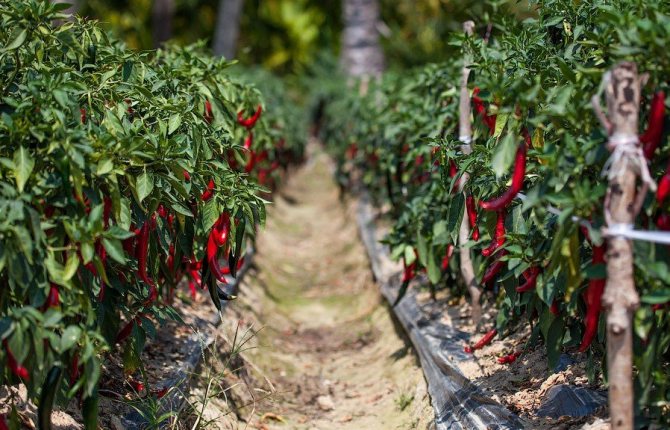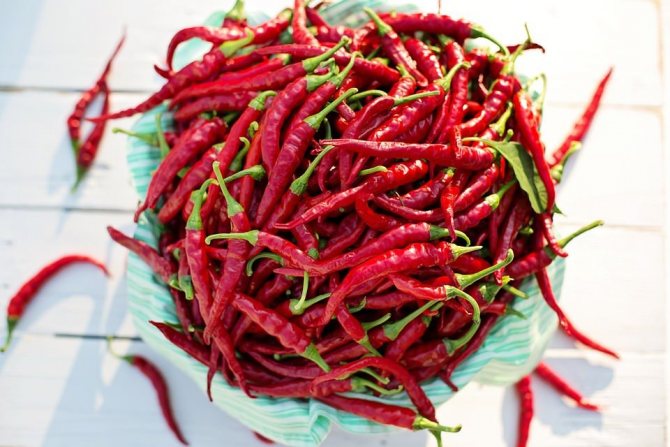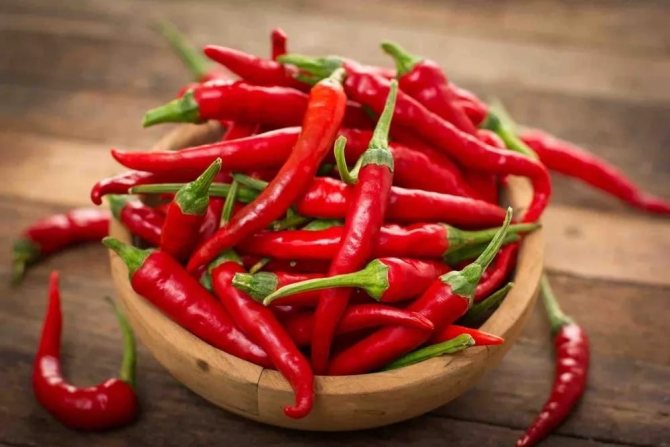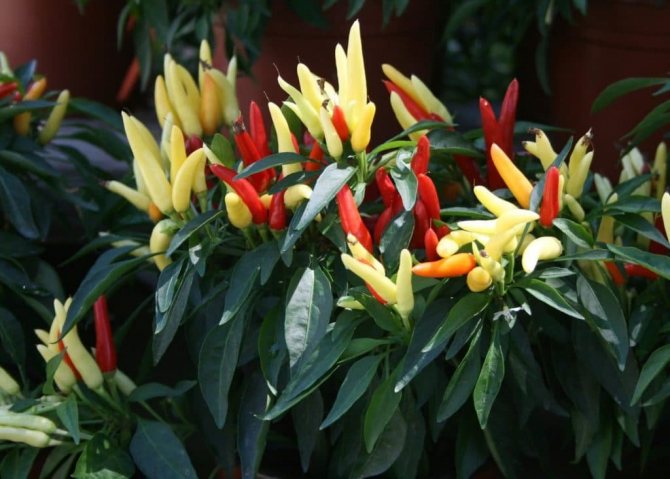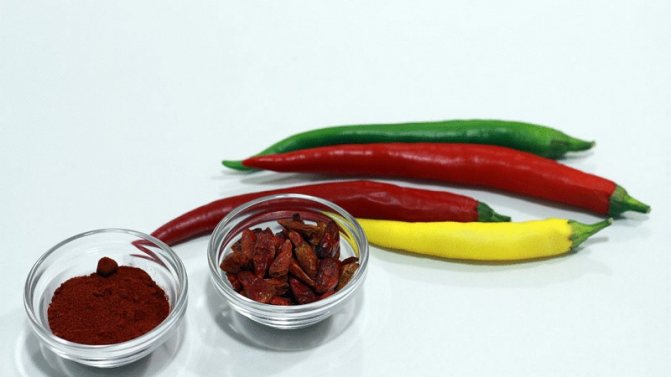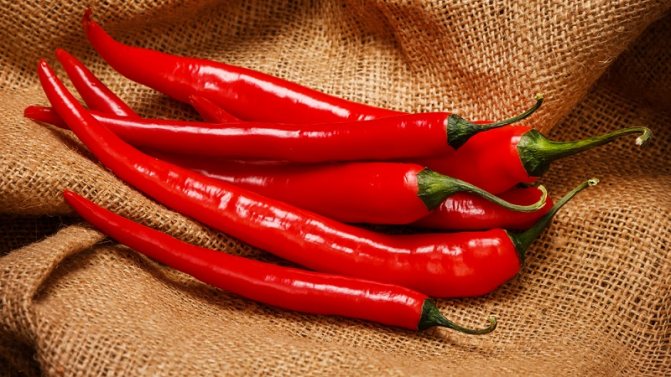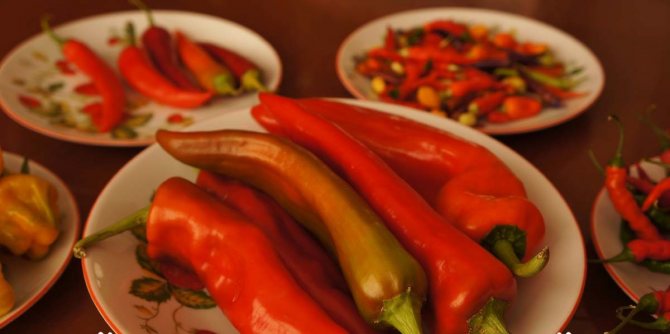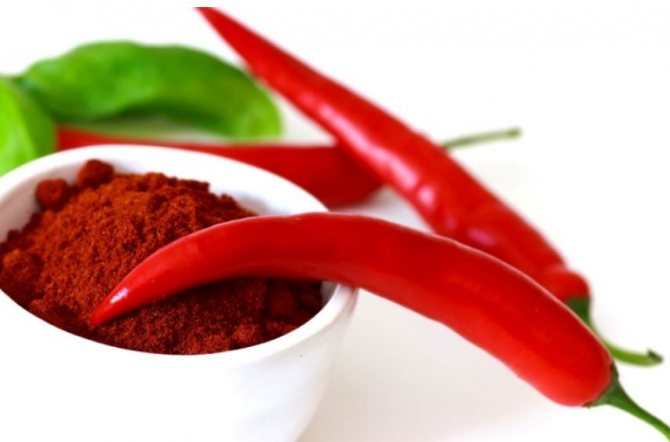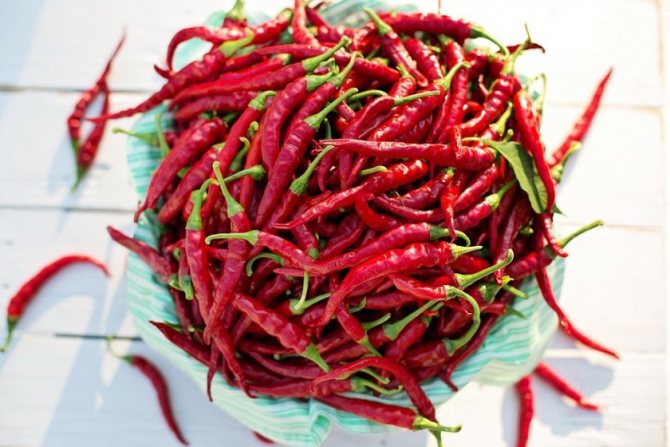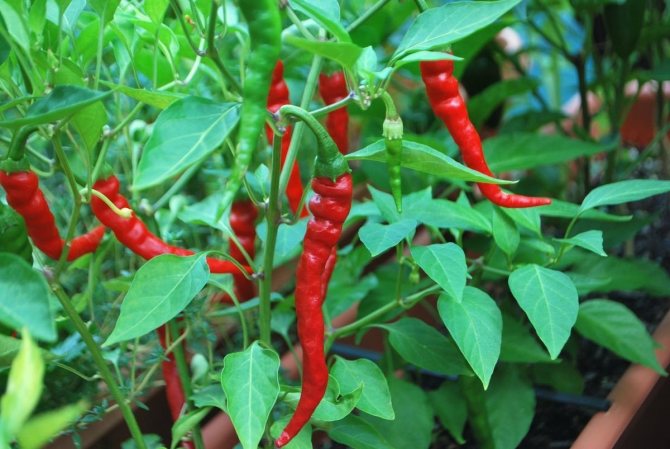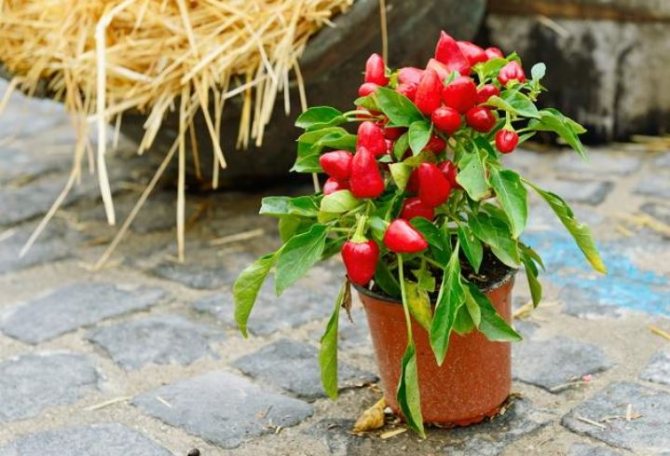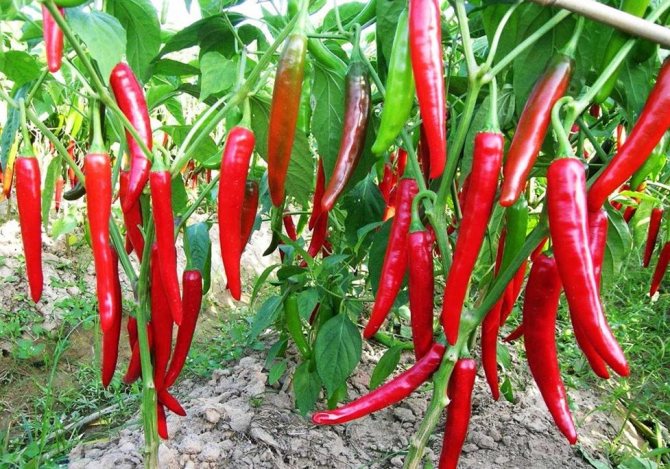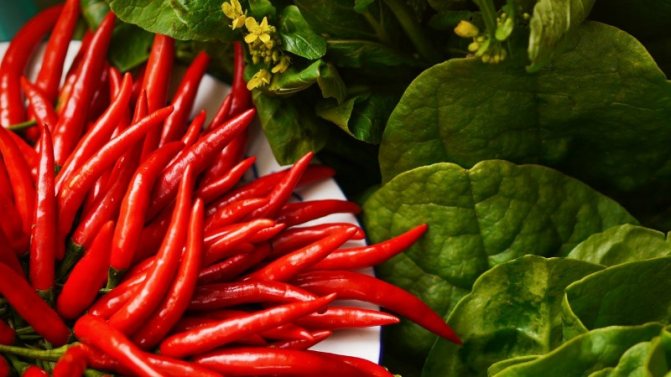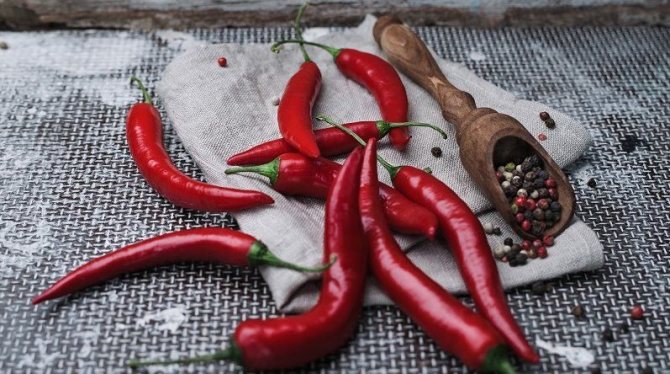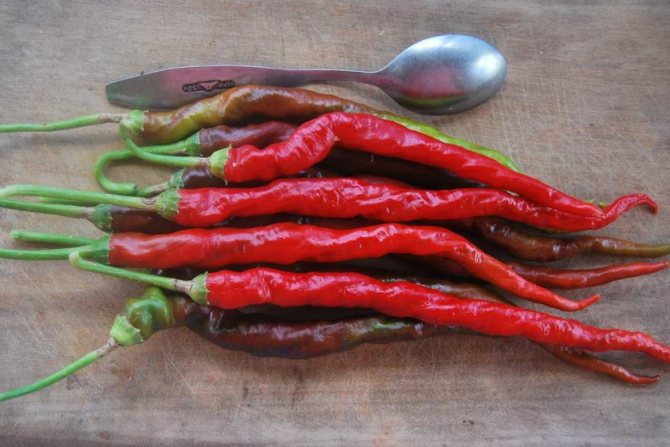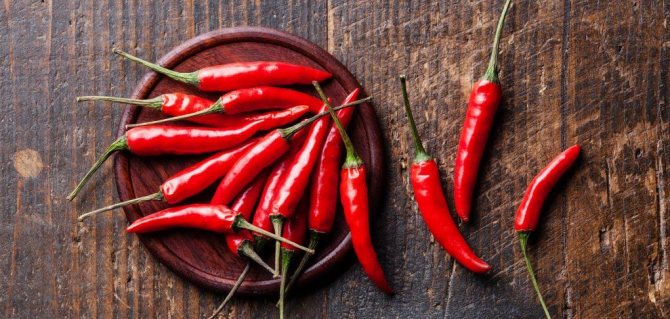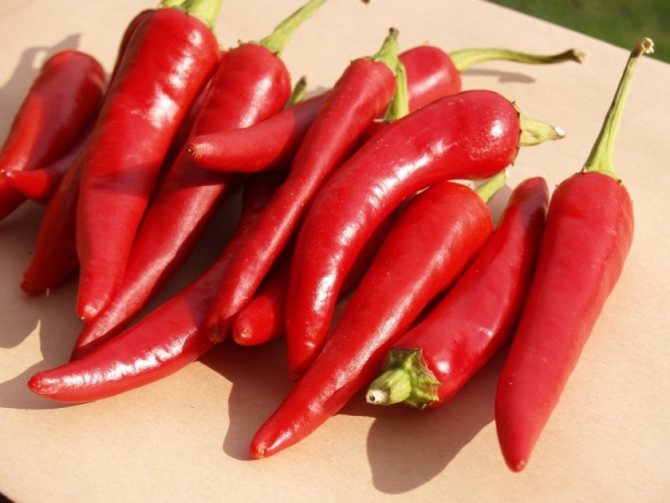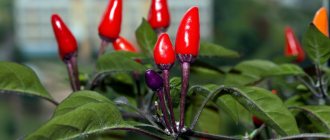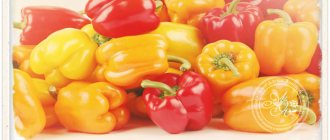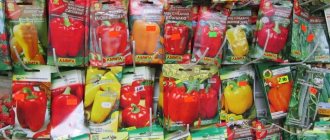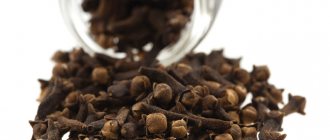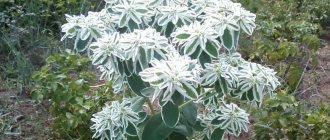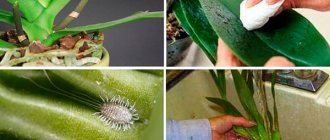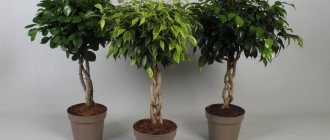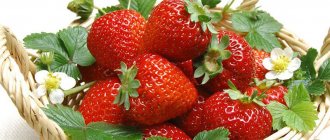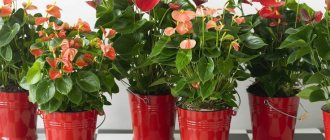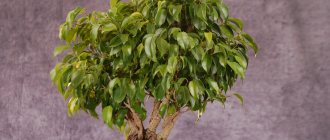Growing plants
Anastasia Zemlyanichko 11.02.2018 no comments
0
Kenyan red pepper is often called cayenne, cayenne, or hot capsicum pepperas well as chili peppers. The varietal group belongs to the species Сarsisum annuum and the Solanovye family (Solanaceae).
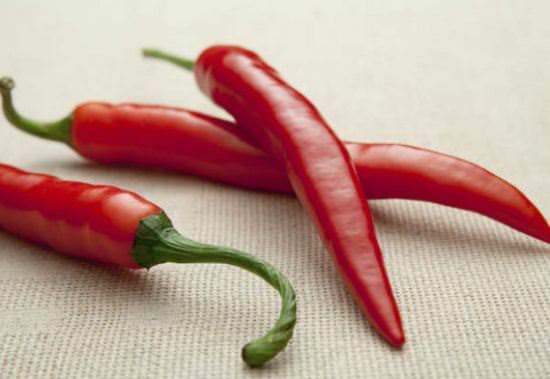
Botanical Description and Locations of Cayenne Pepper
The plant belongs to the Solanaceae family, which also includes potatoes, tomatoes, eggplants and other well-known plants.
In fact this is the very little red pepper that has a particularly pungent taste, thanks to which it is used in cooking. It has medicinal benefits and is also used as a pungent, pungent condiment. By the strength of its taste, cayenne pepper is one of the hottest spices.
Cayenne pepper prefers warm, tropical locations. It is most commonly found in India, Mexico and adjacent areas. His homeland is North and South America.
The plant can reach a height of up to one and a half meters. Shoots of predominantly green shades, often with a purple tint. Are covered with light brown bark. The plant has small leaves (no more than 20 cm long), which resemble an elongated oval in shape.
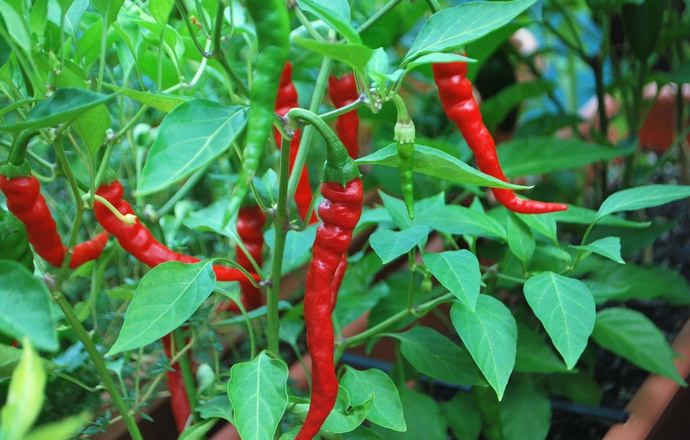

Blooms in early June and gains color until early autumn. It has small flowers of different shades: white, and can often also be purple. Fruits have a wide variety of colors - from white and green to red, purple and even black. It is they who are used in cooking as a burning seasoning, as well as as a remedy.
IT IS INTERESTING
Cayenne pepper is used not only in the form of all the usual ripe fruits - hot red peppers, but also unripe. These fruits are called pepperoni.
How to choose and store a product correctly?
How to choose and store a product correctly? If the pepper is ground or simply dried, then, like all other spices and spices, in a dry and well-ventilated room, away from moisture and sunlight, and always at room temperature. The best containers would be vacuum or paper bags, dark glass jars and canvas bags. Fresh pods are stored in plastic or glass containers in the refrigerator.
When buying a fresh product, you should pay attention to the dryness of the tail. In a freshly harvested fruit, the stalk will be relatively juicy, as will the pulp of ripe fruits, which will emit drops of reddish juice on the cut. After three days, the stalk begins to dry out, and after a week the top layer of the peel will peel off the fruit.
Cayenne peppers that have reached this state can be dried naturally by hanging them in beads in a shaded and well-ventilated room or in an electric vegetable dryer.
A homemade blank must be packed. Grinding hot peppers is best done with a hand mill, since grinding the product in a blender will cause lacrimation and spasms of the larynx and nasopharynx in the one who decides to do it.
When buying dried spice (in pieces or ground), you should pay attention to:
- quality of packaging;
- the composition indicated on the label;
- product appearance.
It is best to purchase cayenne peppers in glass jars, because this particular vessel guarantees the quality before and after the product conservation. You can also appreciate the appearance of the product through the glass, which cannot be said about paper packs, which are also one of the best packaging for storing a dried product.
Dried cayenne peppers usually have a shelf life of eighteen months from the date of packaging. This is the period of time during which the pepper retains its maximum strength in flavor.
High-quality dried cayenne peppers should have a bright color, which can be not only red, but also orange, and even green. Good quality peppers should be free of lumps and chemical additives to prevent caking.
Proper storage of cayenne pepper is extremely important, as it greatly affects the quality of home cooking, home cosmetology or traditional medicine.
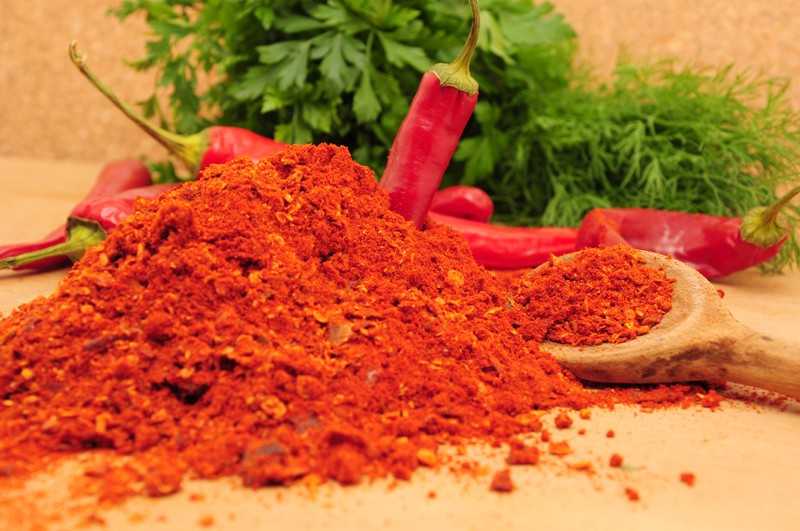

Composition and nutritional value of cayenne pepper
The characteristic burning taste of chili is due to the presence of a special substance in it - capsaicin. Its content is fractions of a percent by weight, however, even such concentrations are sufficient to form a pleasant pungency.
Otherwise, the chemical composition of the fruits of this plant is very similar to other peppers - for example, Bulgarian. The juice contains the following substances:
- Vitamins (groups B, A, C).
- Essential oils.
- Trace elements (iron, calcium, sulfur, phosphorus).
- Fatty vegetable oils.
- Carotenoids.
- Steroidal saponins.
- Specific substances - piperidine, haficin.
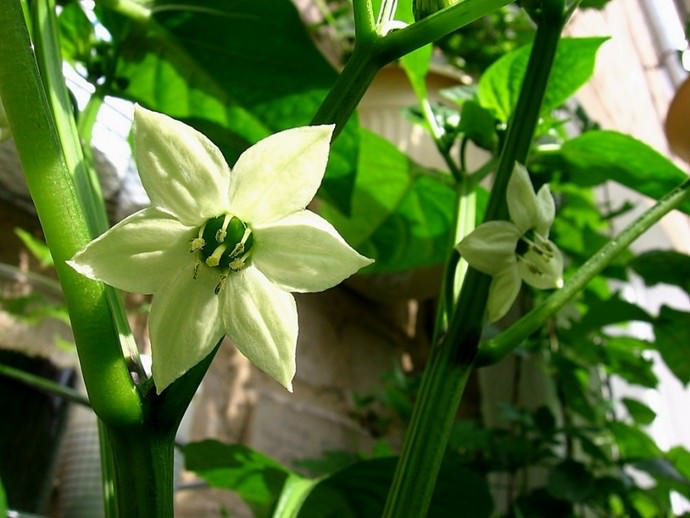

IT IS INTERESTING
In the first week after harvesting, the content of vitamin C in chili peppers does not decrease, but increases. This is a fairly rare occurrence among plants.
In cooking, pepper is used in its natural, unprocessed form., and in the form of a ground powder. To obtain it, the fruits are first dried for a long time in the open sun. Then, when they have lost almost all moisture, they are ground into powder. It is yellow in color, often with shades of gray.
Due to its complex chemical composition, the plant is not only one of the most popular seasonings in cooking, but also has a beneficial effect on many body systems.
Care
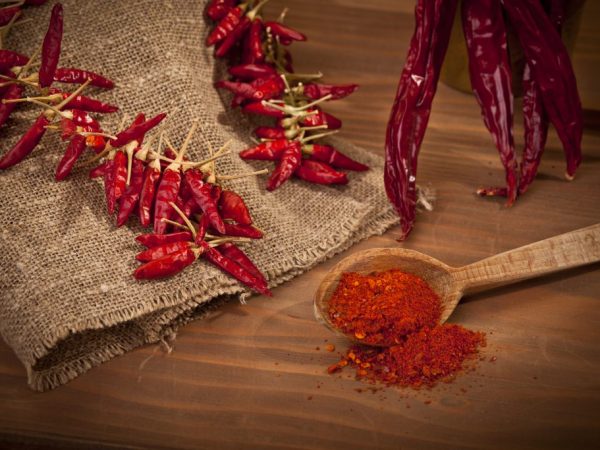

Pepper is not picky
This hot pepper does not require much maintenance, and it lies in the usual rules for growing nightshade crops. Moderate watering, loosening the soil and top dressing will allow you to grow healthy bushes of this exotic.
Watering and loosening
Regular watering is essential when growing any vegetable crop. Watering cayenne pepper should be moderate, avoiding overflow and stagnation of water or complete drying out of the soil. Water the bushes twice a week with warm and settled water. To improve the quality of water, you can add 1 tbsp. l. peroxide per 10 liters of water. Watering with peroxide is carried out once a week.
Before watering, the ground near the bushes must be loosened, this must be done carefully so as not to damage the roots. Loosening will provide good moisture penetration into the soil, prevent stagnation and improve gas exchange, saturate the soil with oxygen.
Top dressing
Cayenne pepper is fed 3-4 times per season. This will be enough to provide the plant with all the necessary substances for full growth and development.
- 14-20 days after planting in the ground, you can feed a nitrogen-containing fertilizer. For this purpose, carbamide or manure is suitable.
- At the beginning of flowering, fertilizing is carried out with phosphorus-potassium fertilizers. For these purposes, superphosphate, potassium humate, bone meal are suitable.
- During the fruiting period, two dressings are carried out with a frequency of 14 days. Fertilizers should be rich in phosphorus and potassium.It is best to use natural supplements such as bone meal or wood ash.
Winter period
Cayenne pepper, according to the description, is a perennial culture. Therefore, if there is a place for overwintering with a temperature of 12-16 ° C or a heated greenhouse, they can be grown for 5 years. After the last harvest in October, early November, the plants are cut off, leaving stems 10-15 cm long, dug up and planted in pots. And stored in a suitable place. During the dormant period, plants are not demanding on lighting, but it is necessary that the temperature does not drop below 12 ° C. Also, during wintering, you need to make sure that the soil does not dry out completely, lightly water the bushes 3-4 times a month. In the spring, when the temperature has stabilized, the bushes are planted in a garden bed or greenhouse.
The healing properties of cayenne pepper
Cayenne pepper is used as an adjuvant in the treatment of some common diseases, eg:
- colds;
- as an additional measure to combat gastric ulcer or duodenal ulcer;
- to prevent cancer, as well as to reduce the rate of development of malignant tumors that have already appeared;
- as a general tonic;
- to combat obesity.
Such properties of Chile are explained by its beneficial effects on the digestive organs, increased immunity, as well as an invigorating effect on the body as a whole.
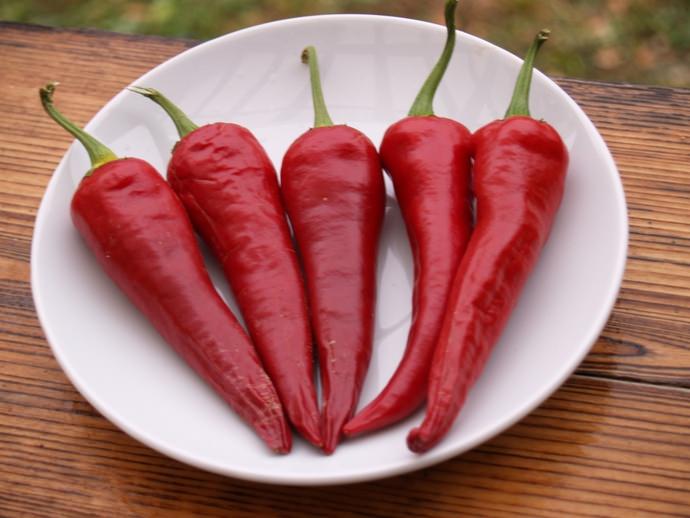

Applications
We studied the benefits and harms of red cayenne pepper - it's time to talk about where and how small pods are used. Let's start with traditional medicine:
- Anti-cold warming agent;
- Anticonvulsant antispasmodic composition;
- Tincture to improve appetite;
- Tincture for rubbing for pain;
- Drink for cleansing blood vessels.
We also recommend: E1442
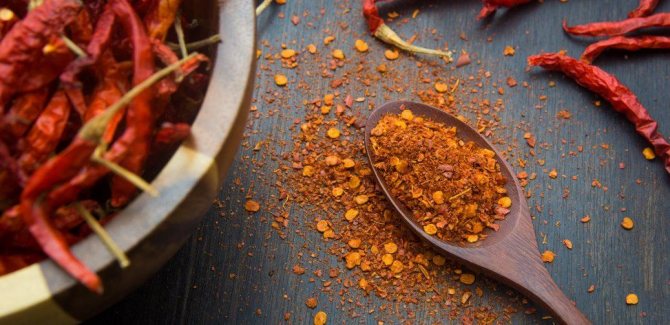

Seasoning cayenne pepper is actively used in home cosmetology - women have already appreciated the unique properties of the product:
- Lymphatic drainage scrub;
- Anti-cellulite mixture;
- Warming mask;
- Detoxifying composition;
- Blood stimulating mixture;
- Toning and softening mask.
Ground cayenne or whole pods have become incredibly popular in cooking - it's hard to find a dish that doesn't go well with the spice.
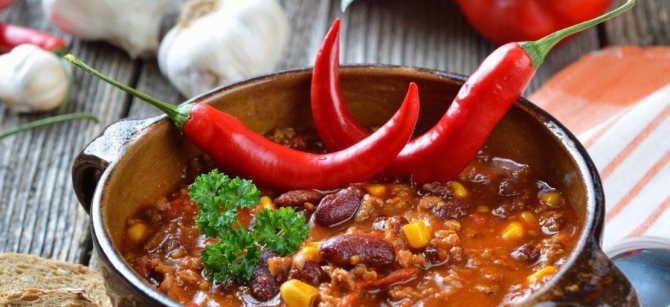

- Dressings for salads and marinades;
- Vegetable and meat dishes;
- Meat and chicken soups;
- Homemade stew and pilaf;
- Seafood and fish dishes;
- Frying breading;
- Omelets;
- Chocolate desserts;
- Kefir and yogurt;
- Indian and Mexican food.
Be careful not to overuse the supplement. Start with a minimal amount of spice to appreciate the pungency.
The use of the plant in traditional medicine
Hot pepper is often used in folk medicine as a measure that strengthens the body, prevents viral colds infections, as well as in the treatment of these pathologies.
Cayenne pepper with milk for colds
The fruits of the plant can be used to treat colds, as well as during prevention during the development of an epidemic. Its healing effect on the body is due to the fact that the pulp of this fruit contains vitamin C and burning substances that block the growth of pathogens.
The recipes are pretty simple. Often, the seasoning is mixed with milk - it is in this form that healing agents are most easily absorbed by the body.
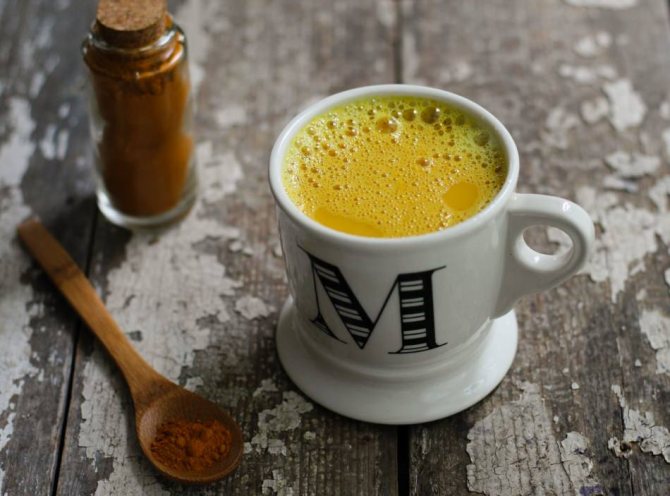

Here are some simple uses:
- If you are already sick with the flu, then in the early stages of the development of pathology, you can take half a teaspoon of ground ginger and turmeric, add a small pinch of ground chili pepper and pour the mixture with a glass of milk. Traditionally, butter and honey are added there to taste. The mixture is cooked to a low boil, then drunk hot before each meal (it is supposed to drink such a glass in 1 day).
- If ARVI is complicated by bronchitis, and you have constant bouts of coughing with phlegm, then ground chili powder is mixed with black pepper, ginger and cardamom (all components in equal amounts - a pinch). They are cooked in the same way in milk and taken in the same way.
Gastrointestinal tract treatment
Oddly enough, but pepper is also used to activate the organs of the digestive system. The burning base destroys pathogenic microbes that provoke the development of ulcerative formations on the walls of the stomach.
Also, moderate consumption of the seasoning stimulates digestion. This is especially true for people with reduced appetite. Active chemicals found in the pulp of the fruit stimulate intestinal peristalsis (contractions), activate the digestive processes.
Benefits of cayenne pepper (video)
Fighting excess weight
To some extent, the plant helps overweight people. As already mentioned, adding spice to dishes stimulates the digestive processes. Accordingly, the food entering the body is almost completely digested. In addition, it raises the internal temperature in the stomach, which helps to burn fat stores in the body.
Important! Before including meals with pungent fruits in your diet, you should consult your doctor. For some people, hot seasonings are contraindicated. In addition, the dose can be determined only on the recommendation of a specialist. It is better not to self-medicate so as not to expose the body to unnecessary risk.
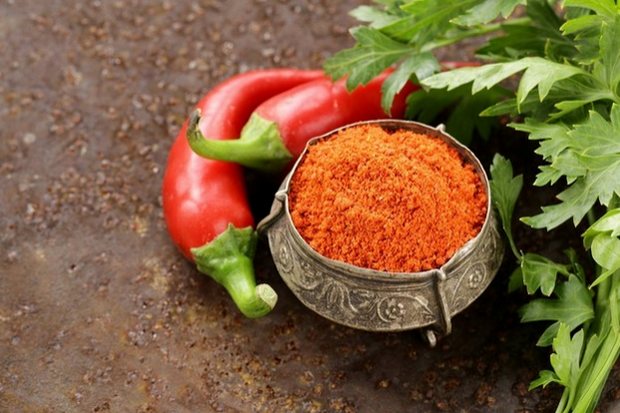

External use of pepper
Chile is also used as an external remedy. The powder is mixed with sunflower oil or used in dry form as a mustard plaster. It helps not only with colds, but also with neuralgia and radiculitis. You need to apply the mixture to the affected area, and use the powder in small quantities - otherwise the skin may "burn".
As for medicines, then the use of hot pepper components has long been mastered in the production of ointments:
- capsin;
- efcamone;
- capsitin;
- gevkamen, etc.


Other beneficial properties of the plant
Along with the listed properties, Chile has other beneficial effects as well:
- it increases potency in men, stimulates sexual activity;
- helps to fight stress;
- stimulates metabolic processes and promotes excretion from the body;
- tones the body, has a beneficial effect on the activity of the heart.
Growing a variety and caring for it
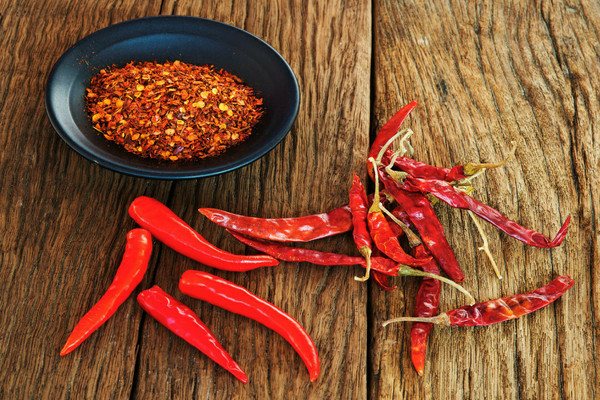

The process of growing and caring for cayenne pepper is interesting. Seeds are usually extracted directly from the pods, and in general, seeds can be purchased at specialty horticultural stores. When planting, you should know some points that will allow the gardener not to make mistakes and get an excellent harvest of cayenne pepper with its incredible taste and properties:
- cayenne pepper seeds should be carefully removed from the pot and distributed between two damp wipes to maintain moisture and vitality of the seeds
- between the napkins, the seedlings should be kept exactly until they begin to germinate gradually. It is important to make sure that the wipes are always wet, but in no case too wet, otherwise this may negatively affect the plant.
- sprouts can hatch very quickly, the first appear about three days after the manipulations
- after that, the peppers are planted in seedling pots. In the soil in the pot, the toni begin to grow gradually, strengthen, and are saturated with all the necessary substances and minerals.
- at such a moment, seeds in pots need a warm, high temperature, which sometimes reaches thirty degrees.Plants also require a sufficient amount of sunlight, and in general, cayenne pepper belongs to light-loving and heat-loving crops. Nevertheless, you should protect the seedlings from direct sunlight, because the sun can burn the fragile green part of the sun, cause it a lot of irreparable damage.
- as soon as several leaves are formed on the shoots, then you can take the strongest shoots and plant them in separate pots, where they will further root, gain growth and, ultimately, bear fruit.
As for the soil, ideally it should be a soil mixture, which also includes loam, humus and sand. You can also purchase ready-made soil in specialized stores for gardeners, in this case it is best to take the soil that is intended for tomato crops, since in its composition it is most similar to the ideal mixture for cayenne pepper. After transplanting, during the first few months, the pepper can not be fed or fed with anything, since it will have enough of those substances that are already in the soil. After 3-4 months, it is best to start using some of the food that is sold in stores. Fertilizers are also better to take those that are intended for feeding tomato crops.
In general, cayenne pepper is a very unpretentious plant, and if properly cared for, the plant will delight with its harvest for several years in a row. Of course, for this, some favorable conditions should be created, because, no matter how unpretentious the plant is, it also needs support and care from the gardener, and this is very important. The seeds can be taken directly from the pods - they are quite ready for germination after some of the procedures we mentioned earlier.
When buying cayenne peppers from the store, the best way for a gardener is to consider how best to transplant it. In the soil in which it was purchased (mainly peat), the plant can be easily stored or transported. But nevertheless, peat is not suitable for storing a flower or plant in it for a long time. Cayenne pepper in a peat pot will simply die. Also, a gardener and plant breeder should consider a few points:
- the pots in which the plant is originally sold are not suitable for it to grow further in them. As a rule, pots have a small volume, and the root system of the plant is in a constant process of growth, so it is best to transplant it.
- if the tips of the plant's root system come out through the drainage rings in the pot, then this is one of the main signs that it is time to transplant the pepper into a larger pot. Nevertheless, if at the time of purchase the plant is already covered with fruits, then it is best not to plant at this time, otherwise the plant will not have time to take root and will drop the peppers.
- in case there are fruits on the bush, it is better to use another method - transshipment. To do this, the plant is sent to a new pot, but at the same time a clod with earth is transferred along with the root system. The void in a new pot can be filled with a new potting mix, but the main lump should remain. After this procedure, the pepper is watered abundantly and placed on the windowsill so that the plant has time to take root and adapt to new conditions. At first, it is best to closely monitor the plant, its reactions to the environment, how it reacts to sunlight, room temperatures.
Cayenne pepper belongs to the heat-loving and light-loving plants. It is best to put the pot with the plant on the windowsills, which are located in the southwest or southeast. There they will receive the necessary lighting, but will avoid direct sunlight. Direct light can damage the green part of the plant, it is imperative to keep this in mind.If the plant lacks light, the leaves may fade and eventually fall off altogether, which is a sign that something is missing from the cayenne pepper. This can usually happen during the winter, when the amount of daylight decreases dramatically. In this case, it is best to create artificial lighting for the pepper.
When it comes to watering, it is often best not to do it. It is enough to keep the plant in moderate humidity, to prevent waterlogging or drying out of the soil. If dry air is noted in the room, then the plant, or rather its green part, is best sprayed daily.
The bushes periodically need sanitary or health-improving pruning, since thanks to this they will not only acquire an excellent and healthy appearance, but also the green part of the plant will become even thicker and more abundant. Also, thanks to pruning, a person who decided to grow cayenne pepper can give it absolutely any shape that he sees in his own fantasies.
What is the Difference Between Cayenne Pepper and Chili
Cayenne pepper is often referred to simply as chili. However, it is not entirely correct to use such a name. The fact is that chili is the common name for different varieties of hot peppers, one of which is cayenne pepper.
Thus, cayenne pepper is one of the hot peppers, and chili is the generic name for varieties of such crops.
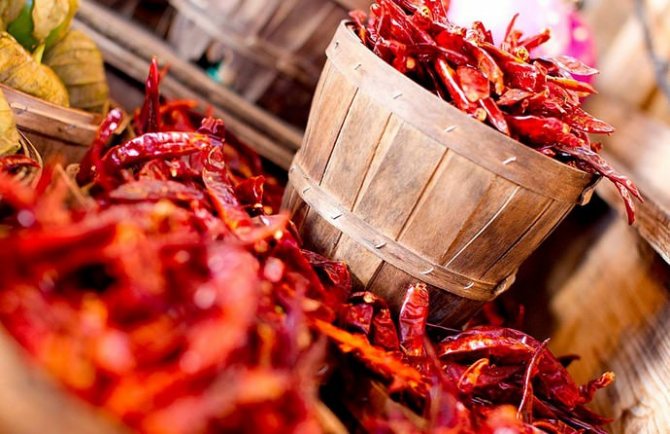

Differences in cultivation
Cayenne pepper and chili grown in the same way, according to the rules of agrotechnics of acute varieties this vegetable crop.
Both variety groups require moist, light soil. They are equally photophilous. Suitable for growing open ground or individual pots. In the second case, the plant will be small.
Attention! Cayenne pepper is not suitable for outdoor cultivation in the northern regions of the country. Vegetable crops will need to create greenhouse conditions.
For planting seedlings in open ground, a well-lit area is chosen. It is important to protect plants from drafts and direct sunlight.
On the eve of the transplant, the seedlings are hardened, taking them outside for several hours. The time spent outdoors is gradually increased. When the night temperature is + 12 ° C and above, the plants can be left outside overnight. After hardening, they are transplanted into open ground. The soil should be light and loose.
Chili peppers are difficult to transplant... Peat cups should be used for seedlings. This measure will save the plants from stress when planted in open ground.
Chili peppers need light nutritious soil, good lighting, a comfortable temperature of + 22 ... + 26 ° C and proper watering. The spice does not tolerate heat and moisture stagnation.
About contraindications and dangers of cayenne pepper
Since the fruit has strong spicy and pungent properties, its use is contraindicated in some groups of persons:
- If a person suffers from chronic heart diseases (hypertension, angina pectoris), then an increase in the heart rate, which can occur after eating pepper, will provoke a rapid heartbeat, which can negatively affect overall well-being.
- Persons with gastric ulcer and duodenal ulcer, liver diseases, gastritis and some other pathologies on the part of the digestive system are not recommended to take spicy food - respectively, and hot peppers.
- Spicy foods are also contraindicated for pregnant and lactating women at any stage.
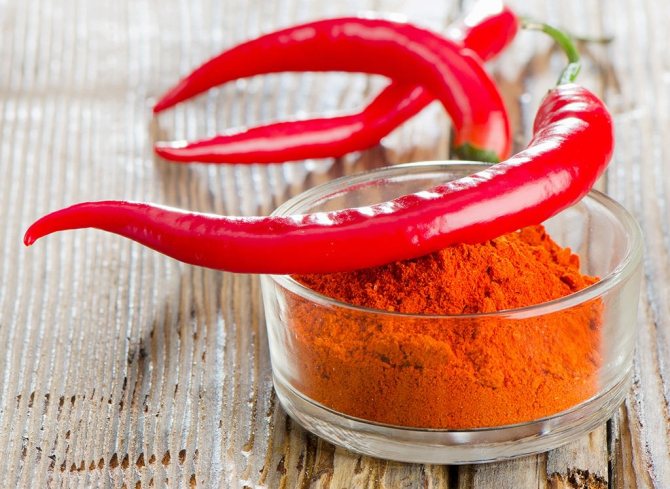

Characteristics of the variety
Cayenne pepper is a relative of chili peppers from the hot pepper group. We are talking about many types of different sizes and colors. Color can be:
- green;
- yellow;
- red.
Size from 2 to 10 cm.
The pungency of the pepper depends on the species. Cayenne pepper is classified on a scale of 1 to 120 based on its pungency and hotness. This scale distinguishes between aroma, pungency, astringency and color.
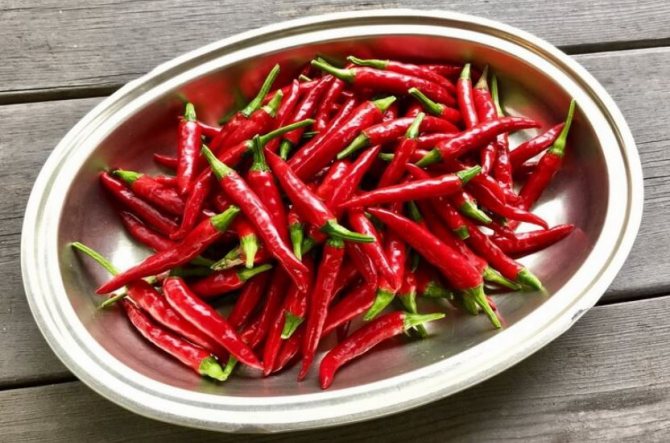

Currently, the largest producers of cayenne pepper are parts of West Africa, Mexico, Brazil, Colombia, California, Guyana, Vietnam, Indonesia and India. Cayenne pepper cultivation has spread to other countries and is often grown at home in flower pots.
Cayenne red pepper in cooking
The use of fruits in cooking has more than one hundred years. It is a very spicy condiment that is always used in small quantities. It is put into dishes in 1 forms:
- Fresh or lightly dried peppers.
- Ground powder from dried fruits.
The powder is added in small quantities to soups and main courses at the last stage of cooking.
As for the fruits, they are placed whole in soups, and then carefully removed when the dish is completely ready. Also used during the preparation of winter preparations (for example, lecho).
Important! Only the whole fruit of the pepper can be put into soup or other dish. If there are cracks on it, this can irrevocably spoil the dish with excessive stinginess.
What is this plant
Let's explore what it is - cayenne pepper! This plant from the Solanaceae family has been known for a long time. The birthplace of Chay Pepper Cayenne is Central America - from there the culture spread throughout the world, now it is grown in the USA, Argentina, Pakistan and India.
Cayenne pepper is a small perennial shrub that grows 90-100 cm in height.
- It has a woody stem with many branches;
- The stem is covered with dense dark green foliage;
- It blooms all year round - tiny white flowers appear;
- Subsequently, the flowers turn into pod fruits;
- The plant bears fruit in October-November.


It's time to figure out what hot cayenne pepper looks like:
- The fruits are glossy;
- With maturity, they change color from dark green to dark red;
- The length of the pods varies from 3 to 12 cm;
- The shape can be varied - elongated, heart-shaped, round;
- Inside each pod, there are many flat, cream-colored seeds.
Look at the photo of cayenne pepper - you've probably come across fresh and dried fruits in stores, and there is also a ground spicy powder on sale.
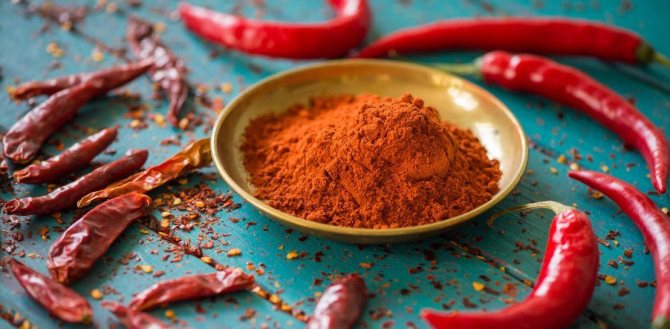

Let's go over the main characteristics of the product:
- Scoville acuity is estimated at 30,000 - 50,000 units. Agree, the indicator is impressive! That is why pods are prized by gourmets around the world;
- The smell is deceptively soft, but the taste is scalding hot;
- That is why the spice should be used very sparingly when cooking.
We also recommend: E220 preservative in dried fruits
We got acquainted with the description of cayenne pepper - let's move on to another important part of the review - it's time to talk about how the hot spice is useful and harmful.
Growing tips
It is not easy to cultivate hot red pepper, since this plant has special requirements for the temperature and humidity regime. That is why lovers of this vegetable crop often have difficulties both when growing it in an open area and at home.
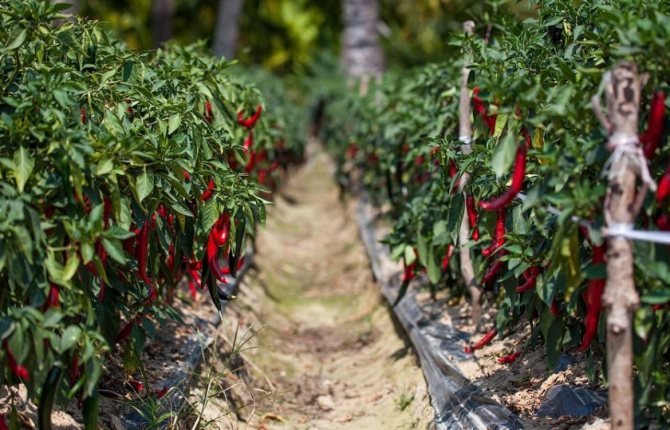

To protect yourself from unnecessary waste of money and effort, when growing a vegetable, we recommend following these tips:
- Before sowing, the seed must be disinfected with a 2% solution of potassium permanganate - this will help protect the plants from fungal attack.
- Seeds are germinated under a transparent cover - this not only increases their germination, but also improves the harmony of growth.
- The culture loves warmth, so it is best to grow it at temperatures in the +23 range. + 25 ° C.
- Hot peppers very quickly impoverish the soil, so the plants must be fed (at least 3 times per season). Complex fertilizers are used for this (nitroammophoska, superphosphate, potassium nitrate, etc.).But it is forbidden to feed these plants with nitrogen fertilizers, since this leads to an increase in the aboveground mass of the bushes, which reduces their productivity.
- Different varieties of plants are grown separately from each other, since cross-pollination can occur during flowering, which dramatically changes the characteristics of the fruits of plants, including aromatic properties.
- Only clean, soft and warm water at room temperature (+22. + 24 ° С) is suitable for watering plants.
Hot peppers are one of the best and most potent additions to both hot and cold dishes. Today, a huge number of varieties of such a plant are known, but they are traditionally divided into two large groups: chili and cayenne. Despite the fact that they belong to different types, their morphological and aromatic properties are almost identical, so they can be used interchangeably in cooking and other industries.

